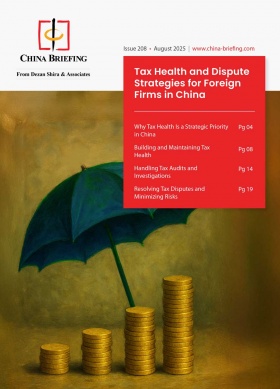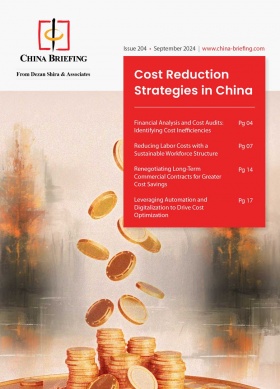US-China Tariff Truce Extended Another 90 Days: Implications for Businesses
The US–China tariff truce got extended for another 90 days until November 10, 2025, delaying tariff hikes and offering short-term relief for supply chains.
On August 11, 2025, President Trump signed an executive order extending the current tariff truce with China by another 90 days, moving the expiration date to November 10, 2025. The decision halts a planned escalation of tariffs—now capped at 30 percent on Chinese imports and 10 percent on US goods—in an effort to prevent economic disruption during the critical holiday trade season.
Without the extension, US duties on Chinese goods could have jumped to 145 percent, while China’s retaliatory tariffs might have risen to 125 percent, effectively approaching a trade embargo. The move comes as US retailers are stocking up for year-end sales, providing much-needed relief for supply chain planning.
Both the US and China have emphasized the importance of maintaining economic stability and allowing more time for negotiations. Analysts see the extension as laying the groundwork for a potential Trump–Xi summit later this year.
What has been agreed?
The Joint Statement on the US–China Economic and Trade Meeting in Stockholm, posted on the White House official website on August 11, 2025, outlines the following:
- US commitment – Continue suspending 24 percentage points of the additional ad valorem duty rate on Chinese goods (including those from Hong Kong and Macao) for 90 days from August 12, 2025, while retaining a 10 percent reciprocal tariff; and
- China’s commitment – Continue suspending 24 percentage points of the additional ad valorem duty rate on US goods for the same period, while keeping a 10 percent tariff; remove or suspend certain non-tariff countermeasures against the US.
To be noted, the 10 percent reciprocal tariff can be stacked with other US trade measures, such as the 20 percent fentanyl tariff, Section 232 and Section 301 duties, and most-favored-nation rates—depending on the product category. (Read more: Breaking Down the US-China Trade Tariffs: What’s in Effect Now?)
How did they get here?
The latest truce builds on a series of intensive negotiations between Washington and Beijing over the summer.
- London talks (June 9–10, 2025): This round focused on defusing tensions after the US announced plans to sharply raise tariffs in July. Officials from both sides engaged in technical discussions on tariff suspension mechanisms, agricultural market access, and intellectual property protections. While no formal agreement was reached in London, negotiators identified potential areas of compromise and agreed to continue talks at a higher political level.
- Stockholm talks (July 28–29, 2025): Hosted under the framework of the Geneva Joint Statement, this meeting marked a turning point. The discussions were described by China as “in-depth, candid, and constructive,” with both sides showing optimism about extending the 90-day tariff pause set to expire on August 12. However, no final agreement was reached in Stockholm. Scott Bessent, US Treasury Secretary, stressed that President Donald Trump retained the “final say on all the trade deals” and that any proposal would first be reviewed in Washington. Speaking aboard Air Force One, Trump hinted at a positive tone, saying the US delegation “had a very good meeting with China.”
Diplomats familiar with the talks described the atmosphere in Stockholm as “pragmatic but cautious,” with both sides eager to avoid a tariff spike during the peak shipping period yet wary of making longer-term commitments.
While the Stockholm talks did not immediately produce a joint statement, they laid the groundwork for the August 11 executive order extending the tariff truce, with both sides agreeing to maintain the current suspension arrangements while negotiations continued. (Read more: What’s delaying the decision?)
How are tariffs impacting Chinese exports to the US?
The rapid escalation and volatility of US tariffs have had a pronounced impact on Chinese exports. In February, shipments to the US plummeted by 41 percent month-on-month following the introduction of a blanket 10 percent tariff. March saw a temporary rebound, likely driven by front-loading in anticipation of steeper tariffs in April. However, exports fell again by 17 percent in April and dropped an additional 12 percent in May, underscoring the ongoing impact of the tariffs. (Read more: How Are Tariffs Impacting Chinese Exports to the US?)
Can the current momentum last?
For both countries, the 90-day extension is a win for stability: it averts immediate tariff hikes, reassures global markets, and allows supply chains to operate without the shock of sudden cost spikes during the crucial holiday shipping period. It also creates a breathing space for negotiators to work through contentious issues such as intellectual property protection, industrial subsidies, and market access. Yet, the very fact that both sides opted for a short-term pause rather than a comprehensive agreement reflects the fragility of the détente.
For the US, domestic political calculations loom large. With the presidential election season intensifying, any concession to China could be cast as weakness, limiting the administration’s room to maneuver. At the same time, US exporters—from agricultural producers to tech firms—are lobbying hard for tariff relief, creating competing pressures on the White House. In China, economic headwinds such as slower consumer demand, property market strains, and the need to maintain manufacturing competitiveness are driving interest in stability, but not at the cost of conceding on core industrial policy goals.
The extension’s success will hinge on whether negotiators can turn symbolic goodwill into substantive progress. If upcoming talks—potentially capped by a Trump–Xi meeting—produce even partial agreements, the pause could be rolled forward again, gradually creating a new normal of managed competition rather than open confrontation. However, if talks stall or geopolitical flashpoints intrude—whether over technology controls or other geopolitical issues—the truce could unravel abruptly. In that sense, the current momentum is less a lasting breakthrough than a precarious intermission in a much longer strategic contest.
Implications for businesses
As mentioned, the extension of the tariff truce offers short-term stability for supply chains, particularly for importers gearing up for the year-end retail season. Companies can finalize holiday inventories and shipping schedules with greater certainty, avoiding the disruptions that a sudden tariff hike would have triggered.
However, the medium-term outlook remains uncertain. The truce is set to expire in November, and absent a more comprehensive agreement, businesses must prepare for the possibility of renewed tariff escalation. This looming deadline means that long-term contracts, sourcing commitments, and capital investments will still be approached with caution.
The shift in US trade policy is also prompting a reassessment of China+1 strategies. For years, manufacturers relocated production to Southeast Asia (SEA) to sidestep US tariffs on Chinese-made goods. But with Washington now imposing higher tariffs on goods from several SEA countries—and blanket duties on transshipped products, the cost advantages of offshoring are narrowing. Companies may need to revisit the balance between overseas diversification and domestic or China-based production.
In this environment, flexibility becomes critical. Businesses with agile sourcing networks, adaptable logistics plans, and the ability to pivot production quickly will be better equipped to weather sudden policy changes.
About Us
China Briefing is one of five regional Asia Briefing publications, supported by Dezan Shira & Associates. For a complimentary subscription to China Briefing’s content products, please click here.
Dezan Shira & Associates assists foreign investors into China and has done so since 1992 through offices in Beijing, Tianjin, Dalian, Qingdao, Shanghai, Hangzhou, Ningbo, Suzhou, Guangzhou, Haikou, Zhongshan, Shenzhen, and Hong Kong. We also have offices in Vietnam, Indonesia, Singapore, United States, Germany, Italy, India, and Dubai (UAE) and partner firms assisting foreign investors in The Philippines, Malaysia, Thailand, Bangladesh, and Australia. For assistance in China, please contact the firm at china@dezshira.com or visit our website at www.dezshira.com.
- Previous Article August 12 Deadline: Will Trump Extend the US-China Tariff Truce or Let Rates Spike?
- Next Article What Will China’s Economic Policy Look Like in H2 2025?







